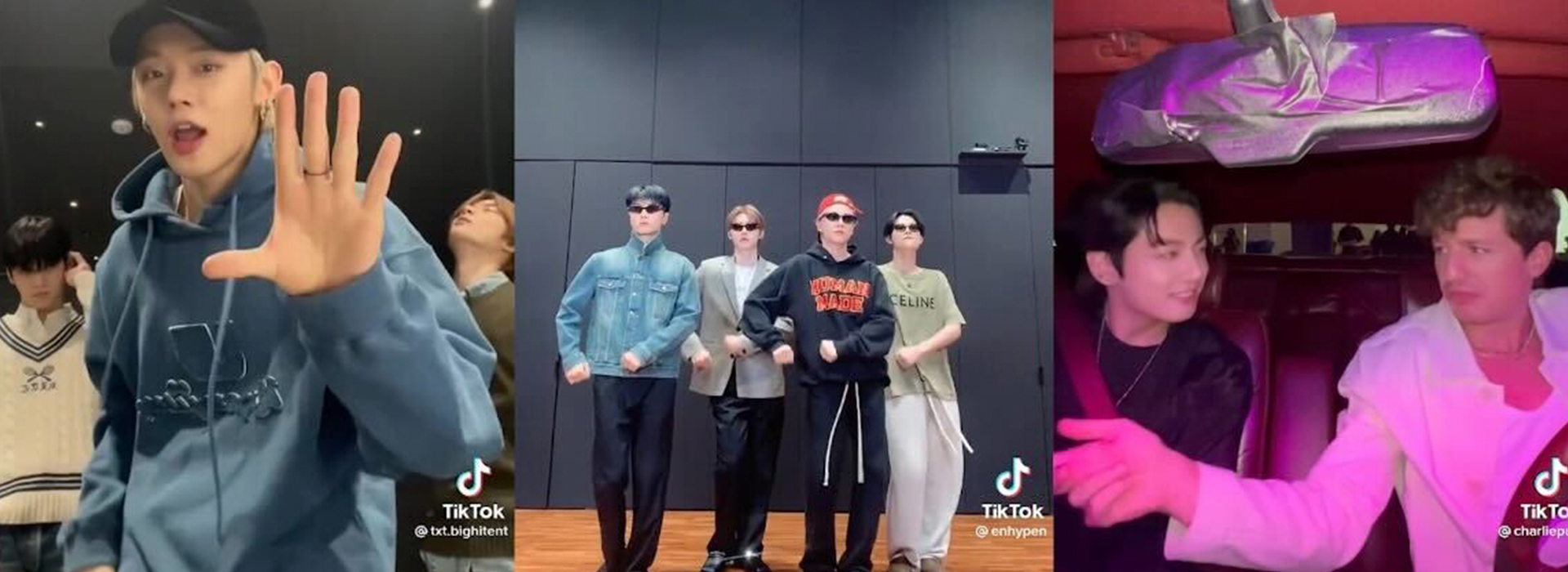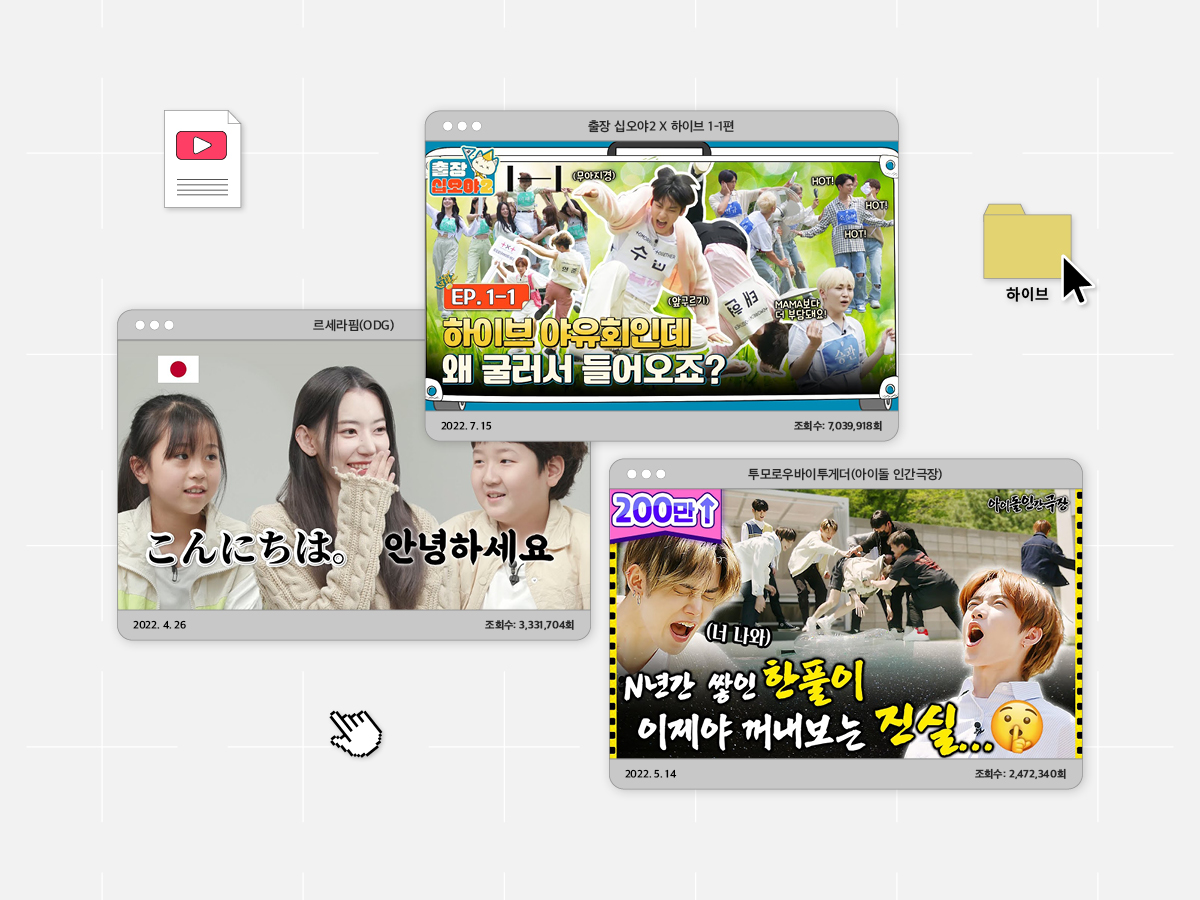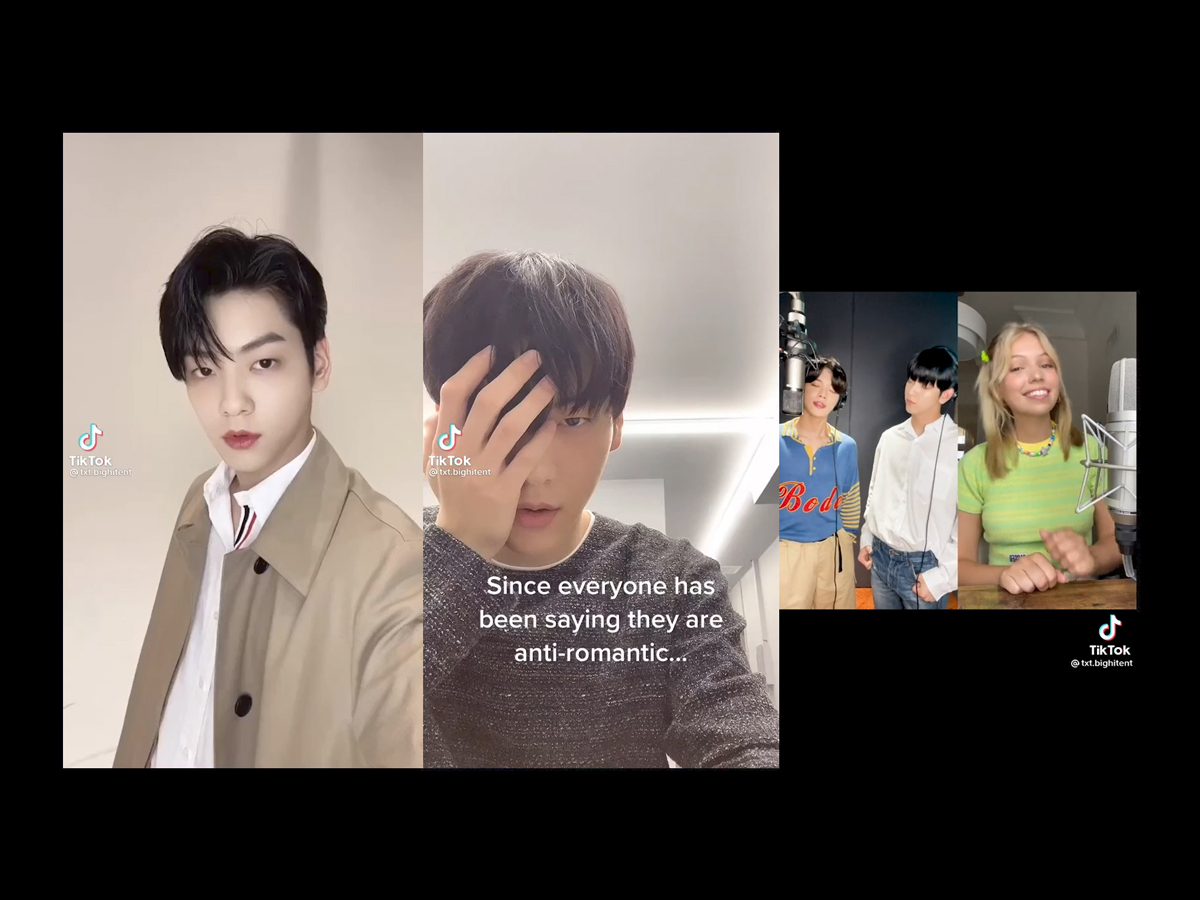
Juyoung Park remarked “Videos that use parts of the song other than the highlight used for the promotion sometimes unexpectedly go viral.” According to Jason Park, K-pop is usually promoted on TikTok not only by artists but also by TikTok users, and some creators enjoy up to a 10-20% participation rate. As such, the massively popular platform has an unusually high engagement rate when compared with other platforms. Maybe that’s why Choi Yun Hyuk, VP of BELIFT LAB defined the social app as “a channel that blurs the line between creators and consumers.” TOMORROW X TOGETHER uploaded short videos of its members reacting to dance challenge participants, using the platform’s “Duet” function, and video clips using fan-made remixes. When ENHYPEN’s “Polaroid Love” challenge caught on, the band’s members posted a video of themselves dancing to the choreography created by their fans, while group TREASURE created a video of themselves performing the “Darari” dance challenge, also created by their fans. In the K-pop scene, it has become a common promotional strategy for record labels to make compilations of TikTok challenge videos made by fans into music videos. Thus, it’s not an overstatement to say that while K-pop is a genre and industry that’s initially created by artists and labels, it is also widely recreated & adopted by its fans. While it is uncommon for artists to directly show reactions to their fans or users on other platforms, it is considered only natural for artists, fans and users to mingle and have fun using the artist’s content on TikTok.
“If videos associated with them go viral, artists can benefit from the publicity and the trend can even resonate further on TikTok, backed by the artists’ influence.” As noted by Juyoung Park, artists can promote content or trends about themselves to a wider audience as they jump on a TikTok trend. Moreover, “creators of the trending videos show positive reactions saying ‘my artist did my challenge’ and ‘I feel like I’m dreaming’ or ‘I cannot believe this is happening,’” according to In Jung-jin, manager of Big Hit Music’s Marketing Team. As such, TikTok also serves as an avenue where fans can check out how their favorite artists react to their content. Representatives of Big Hit Music and BELIFT LAB agreed that “TikTok is the channel of communication between artists and their fans.” TikTok can blur the line between artists and fans, which ironically allows all TikTokers to mix and mingle and join the latest trends on the platform. The “Woo Young Woo Challenge” posted by ENHYPEN recorded roughly 8 million views in just 15 hours. Also, “Jiggle Jiggle” videos of multiple K-pop artists, which trended globally, captured a staggering 26 million views to date.
.
Unauthorized reproduction and distribution prohibited.
- Why HYBE went with ‘The Game Caterers’2022.08.08

